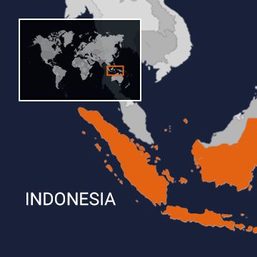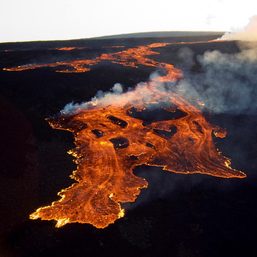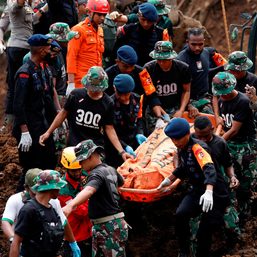SUMMARY
This is AI generated summarization, which may have errors. For context, always refer to the full article.
![[Vantage Point] Is the gov’t ready for the ‘Big One’?](https://www.rappler.com/tachyon/2022/09/govt-the-big-one-September-24-2022.jpg)
They call it an act of God that many people believe nothing can be done about. Yes, a natural disaster causes an emotional trauma that leaves a scar that victims may carry as long as they live. Lives may be cut short. Victims may suffer from temporary or permanent injury. Livelihoods are shuttered, and commerce grounds to a halt, disrupting the social and economic system, even as our ecosystem bears the brunt.
Despite advances in modern technology, there doesn’t seem to be a way out of these catastrophes.
But among natural disasters, earthquakes remain an enigma. Aside from knowing about the Ring of Fire (a path along the Pacific Ocean characterized by active volcanoes and frequent earthquakes) and fault lines (those geological fractures wherein the movement of masses of rock has displaced parts of the Earth’s crust), there is still no definite way to predict when these violent seismic events will occur.
There may have been huge progress in monitoring fault lines which scientists use to trace the movement of the Earth. But unlike typhoons, predicting earthquakes is still not a sure thing. Even the most expert seismologists can only estimate where they may likely strike by calculating probabilities and forecasts. Through the years, we have witnessed an unimaginable number of deaths and amount of damage to properties along earthquake paths which are sadly not confined to the epicenter, but all the areas located along fault lines.
The most our scientists can do to mitigate disasters from earthquakes is to enhance the government’s detection capability. Philippine Institute of Volcanology and Seismology (Phivolcs) Director Renato Solidum, Jr., who is also the new chief of the Department of Science and Technology, is upbeat about the Mindanao Cluster Monitoring Center for Earthquake and Tsunami (PMCMCET) which he believes is most capable of boosting the country’s earthquake detection capability.
We now have, as of Phivolcs record, a total of 111 facilities in the agency’s seismic network, including 75 satellite-telemetered seismic stations, 29 staff-controlled seismic stations, and seven volcano observatories.
Solidum believes that forming earthquake detection facilities in other areas of the country would ensure continuity of service, especially during disasters. “If there is a large earthquake in Metro Manila, [these other facilities] would help us ensure that the office is still operating. It is an initial step to ensure continuity of service,” Solidum said in a statement to media.
As early as March 12, 2015, the Department of Public Works and Highways (DPWH) – through the National Building Code Development Office (NBCDO) Memorandum Circular No. 1, Series of 2015 – had already mandated the installation of “earthquake recording instrumentation (ERI),” an electronic sensing system or accelerograph which can perceive tremors beneath the Earth.
Government and private buildings are required to install a certain number of ERI in Seismic Zone 4 in the entire Philippines, except Palawan and Tawi-Tawi which are in Zone 2. It now forms part of the requirements for the Annual Certificate of Inspections for existing buildings and as a pre-condition for the issuance of Certificate of Occupancy for new buildings covered by the guidelines.
The DPWH requires local building officials and the city/municipal engineer, who are tasked with monitoring compliance with the provisions, to submit a quarterly compliance report of the buildings under their respective areas of jurisdiction.
The DPWH in effect has left it to respective local government units to implement the guidelines. This is where the situation becomes tricky. The DPWH does not endorse any brand or supplier of accelerographs or recorders that use an accelerometer, which detects the acceleration of the ground during an earthquake. The LGU can choose which supplier to endorse to old and new establishments. With the murky procurement image of nearly all government offices, it’s not surprising why some people suspect something may go amiss.
In government and private buildings taller than 50 meters, three accelerographs are required. One accelerograph each is required for both public and private hospitals (with at least 50 beds and three stories) and schools (with at least 20 classrooms and three stories). Provincial, city, and municipal halls and buildings must install one accelerograph each. In each commercial or industrial building with an occupancy of a minimum of 1,000 persons or a gross floor area of 10,000 square meters or more, one accelerograph must be installed.
At over P2 million per unit and a monthly maintenance fee of over P20,000, the price is peanuts considering that building owners will just have to pass the cost on to their tenants, while new buildings such as swanky condominiums would just tack the price to their marketing budget. What better way to advertise a condominium unit than to parade an earthquake gadget that may give uninformed dwellers a false sense of security?
An accelerograph would not and could not predict an earthquake. Some building owners find the installation of accelerographs unnecessary. Over the years since its use has been mandated, the country has been struck with powerful earthquakes, the latest of which was recorded in Abra – a magnitude 7 earthquake on July 27. The earthquake left 11 fatalities, 615 injured, and P1.88 billion worth of damage.
In the United States, the installation of accelerographs is not mandatory for all establishments. The federal government merely requests owners of buildings in earthquake-prone areas to equip their structures with these strong-motion instruments.
Some local building owners interviewed by Rappler believe that the monitoring device should only be installed in strategic places just like what the US does. After all, they ask, why should it be a necessity for all if they have already complied with the Building Code specifications and periodically train the building occupants about what to do before, during, and after an earthquake?
What does an accelerograph really do? It was in 1992, under the National Structural Code of the Philippines, when the installation of accelerographs was first required (but not yet mandated). Structural engineers then were concerned only about the strength design capacity of buildings, based on seismic parameters provided in the US Uniform Building Code (UBC).
The 1994 Northridge Earthquake in the US and the 1995 Kobe Earthquake in Japan served as the inspiration for the DPWH to deem it necessary to improve the country’s understanding of a building’s response to real seismic events. The government wanted to have its own earthquake baseline data for validating the seismic design parameters that are already in use and to evaluate future structural designs of buildings. This way, the government will be able to support earthquake disaster mitigation efforts.
The recorded data will be used to improve the safety provisions of the local structural code, thereby reducing loss of life, limb, and property during future major earthquakes, and increasing our understanding of the behavior and potential damage to buildings under the dynamic load of earthquakes.
Has the accelerograph served its purpose since its mandate? Perhaps the government should make a detailed public report on how this electronic tremor sensor has helped in lessening the disastrous effects of earthquakes and not merely leave the collected data to gather dust in a filing cabinet. – Rappler.com
Val A. Villanueva is a veteran business journalist. He was a former business editor of the Philippine Star and the Gokongwei-owned Manila Times. For comments, suggestions email him at mvala.v@gmail.com.
Add a comment
How does this make you feel?










There are no comments yet. Add your comment to start the conversation.